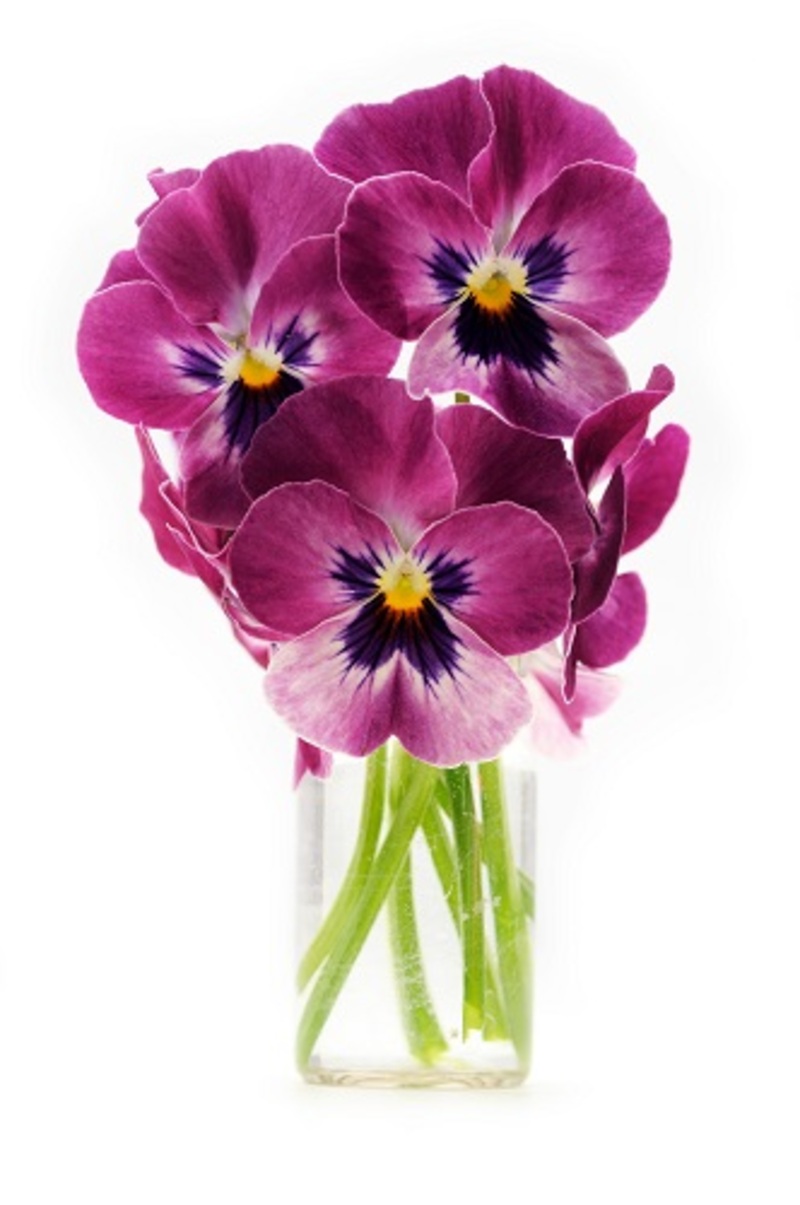Your Ultimate Guide to Thriving Orchids
Posted on 13/08/2025
Your Ultimate Guide to Thriving Orchids
Orchids are among the most captivating and exotic flowering plants you can grow, admired for their striking blooms and architectural beauty. While these delicate plants may have a reputation for being difficult, with the right knowledge and care, successful orchid cultivation is well within reach for both beginners and seasoned gardeners. Whether you wish to nurture a majestic Phalaenopsis or a dazzling Dendrobium, this comprehensive guide will help you unlock the secrets of thriving orchids and elevate your home's botanical display.
Why Grow Orchids?
Before diving into practical tips, let's understand why orchid plants have captivated so many for centuries:
- Stunning Variety: There are over 25,000 species of orchids with countless hybrids, offering a bloom shape, size, and color for everyone.
- Elegant Longevity: With proper care, orchid flowers can last for weeks or even months, making them excellent long-term indoor plants.
- Air Quality Benefits: Like many houseplants, orchids can purify the air and enhance your indoor environment.
Ready to watch your orchids flourish? Let's explore everything you need to know for growing healthy orchids at home.

Understanding Orchid Types
Getting familiar with the main types of orchids helps ensure you provide the proper care. Here's a brief overview:
1. Phalaenopsis (Moth Orchids)
- Beginner-friendly: Tolerates indoor conditions and blooms for months.
- Light: Indirect bright light avoids leaf burn.
- Water: Enjoys drying out slightly between waterings.
2. Cattleya (Corsage Orchids)
- Known for: Large, richly colored, and fragrant flowers.
- Care tip: Prefers bright, filtered light and regular feeding in growth season.
3. Dendrobium
- Bloom style: Many small flowers along slender stems.
- Condition: Needs more light and cooler night temperatures.
4. Oncidium
- Nickname: "Dancing Lady Orchids."
- Traits: Multiple flower spikes and prefers high humidity.
Choosing the Right Orchid for Your Home
For beginners, focus on Phalaenopsis or Dendrobium--they adapt well to standard indoor spaces and are forgiving during learning curves. As you gain confidence, explore more diverse species!
Essential Conditions for Thriving Orchids
Every healthy orchid shares common needs. Mastering these key requirements puts you on the road to stunning blooms year after year.
1. Appropriate Light Levels
Orchids require lots of light, but not direct mid-day sun. East- or west-facing windows with sheer curtains are ideal. Too little light means no blooms, while too much can scorch leaves. Tell-tale signs and solutions:
- Deep green leaves: Not enough light.
- Yellow or red-tinged leaves: Too much light.
- Balance: Provide filtered, bright but indirect light for best results.
2. Temperature and Humidity
Most common orchids prefer day temperatures between 65-80?F (18-27?C) and night temperatures about 10?F lower. Stable temps avoid stress and bud drop. Humidity should hover around 50-70%--use a humidity tray or small humidifier in dry spaces.
3. Proper Watering Techniques
A top concern in orchid care is over- or under-watering. As epiphyte plants, many orchids get moisture from the air and their roots do not like to stay soggy. Tips to master watering:
- Water once a week in most environments; more in summer, less in winter.
- Always let the potting media dry partially before watering again.
- Water in the morning so leaves dry by nightfall (prevents rot).
- Use tepid water and ensure pots drain completely.
4. Quality Orchid Potting Mix
Unlike other houseplants, orchids thrive in chunky, airy media--not soil. Typical mixes include bark, sphagnum moss, perlite, and charcoal. This blend allows roots to breathe and prevents rot. Repot every 1-2 years or when the media breaks down.
5. Fertilizing for Vibrant Blooms
"Feed weakly, weekly" is the traditional orchid motto. Use a balanced, water-soluble orchid fertilizer, diluted to half strength, every week during the growing season. In winter, reduce feeding to once a month. Flush with clear water monthly to avoid salt buildup.
Repotting and Pruning Orchids
When and Why to Repot
Repot every 1-2 years, or when your orchid's roots outgrow the pot or media starts to break down. Repotting revitalizes the plant and encourages healthy root growth and prolific flowering.
Repotting Steps
- Choose a new pot just 1-2 inches larger if needed--and always with drainage holes.
- Gently remove orchid from its current pot, shaking off old media.
- Trim away dead roots (those that are mushy or brown).
- Position your orchid in the new pot and surround roots with fresh orchid mix.
- Water sparingly for a week to allow the plant to settle and heal.
Pruning After Blooming
After your orchid finishes flowering, prune the flower spike as directed by the species:
- Phalaenopsis: Cut just above a node (a small bump) on the spike to encourage reblooming.
- Other types: Remove the spike entirely if it dries up, to redirect energy into future growth.
Common Orchid Challenges (and Solutions!)
Even veteran orchid growers face a few hiccups. Here are common issues and how to fix them, ensuring orchid success:
Yellowing Leaves
- Cause: Over-watering, old age, or low light.
- Solution: Adjust watering schedule, trim off old leaves, move to brighter light.
Wrinkled or Limp Leaves
- Cause: Under-watering, root rot, or lack of humidity.
- Solution: Check roots for health, increase humidity, review watering approach.
No Blooms
- Cause: Insufficient light, wrong temperature, or not enough feeding.
- Solution: Increase light exposure, monitor temperatures (especially night-time drops), and resume regular fertilization.
Pest Problems
- Common pests: Mealybugs, aphids, spider mites.
- Solution: Treat with a diluted soap and water spray, isolate infected plants, and maintain cleanliness.
Orchid Flowering Secrets: How to Encourage Reblooms
Your goal as a grower is not only to keep your orchids alive, but to witness spectacular orchid reblooming year after year! Use these proven methods:
- Switch up temperature: Many orchids need a 10-15?F (5-8?C) temperature difference between day and night to set flower buds.
- Boost ambient light in winter: Move plants closer to bright windows or use grow lights.
- Do not over-fertilize: Excess fertilizer encourages leaf growth but not blooms.
- Respect rest periods: Some orchids require a cool, dry "rest" to stimulate future flowers. Research your species!
Special Orchid Care Tips for Beginners
- Don't be afraid to experiment. Each home has unique conditions--monitor and adapt as you go.
- Mark your watering and feeding schedule. Consistency encourages better growth.
- Join orchid groups or online communities. You'll gain advice and inspiration from enthusiasts worldwide.
Decorative and Creative Ways to Display Orchids
Orchids aren't just botanical marvels--they're striking decor elements. Try these creative ideas:
- Grouping: Cluster several orchid varieties on a table for a mini indoor garden.
- Hang on walls: Mount epiphytic orchids on driftwood or bark for an airy, modern display.
- Under glass: Showcase small orchids inside glass terrariums (ensure airflow).
Frequently Asked Questions on Caring for Orchids
Q: Can I use ordinary soil for my orchids?
A: No--orchids require airy, special potting mixes (bark, moss, etc.) to mimic their natural environment and prevent root rot.
Q: How do I know if I am overwatering?
A: Soggy, brown roots, wilted leaves, or a smell of rot signal overwatering. Always let the media dry partially between waterings.
Q: My orchid dropped its buds. Why?
A: Sudden drops in humidity, temperature swings, or moving the plant while in bud can cause bud drop. Keep orchids in stable conditions during bud formation.

Final Tips for Exceptional Orchid Growth
- Observe your orchid frequently and adjust care as needed.
- Label your plants by species so you can research their specific needs.
- Don't give up! Even seasoned orchid lovers experience setbacks--stick with it and your patience will pay off in dazzling blooms.
Conclusion: Cultivate Stunning Orchids Year After Year
Learning how to grow thriving orchids is a gradual, rewarding process. By nurturing the light, water, temperature, and feeding needs of your plants--and approaching challenges as learning opportunities--you'll enjoy breath-taking displays of exotic beauty in your own home. Whether you're just starting your orchid journey or looking to expand your greenhouse, follow these expert-backed tips to create your own orchid paradise.
Happy growing, and may your orchids thrive!
Latest Posts
Your Ultimate Guide to Thriving Orchids
Discover the Significance of Birth Month Flowers
Extend the Life of Poinsettias with These Simple Steps





